Abstract
Degradation of prostaglandins (PGs) during passage through the human pulmonary circulation was investigated by measuring the transpulmonary plasma PGF2 alpha difference during continuous intravenous infusion of PGF2 alpha (5-10 mug/min). Seven patients with cardiological disorders and two patients with extensive pulmonary abnormalities were investigated during diagnostic cardiac catheterization. PGF2 alpha levels were measured by radioimmunoassay. The seven cardiac patients were found to have transpulmonary PGF2 alpha differences of 47-88%, indicating metabolism of the PG in the lungs. A patient with extensive bronchiectasis had an apparently normal transpulmonary PGF2alpha difference despite gross abnormalities in routine lung function tests. A patient with primary pulmonary arterial hypertension showed no metabolism of PGF2alpha in the pulmonary circulation. The results show that PG degradation is an aspect of normal lung function and suggest that it becomes imparied when extensive pulmonary vascular damage exists.
Full text
PDF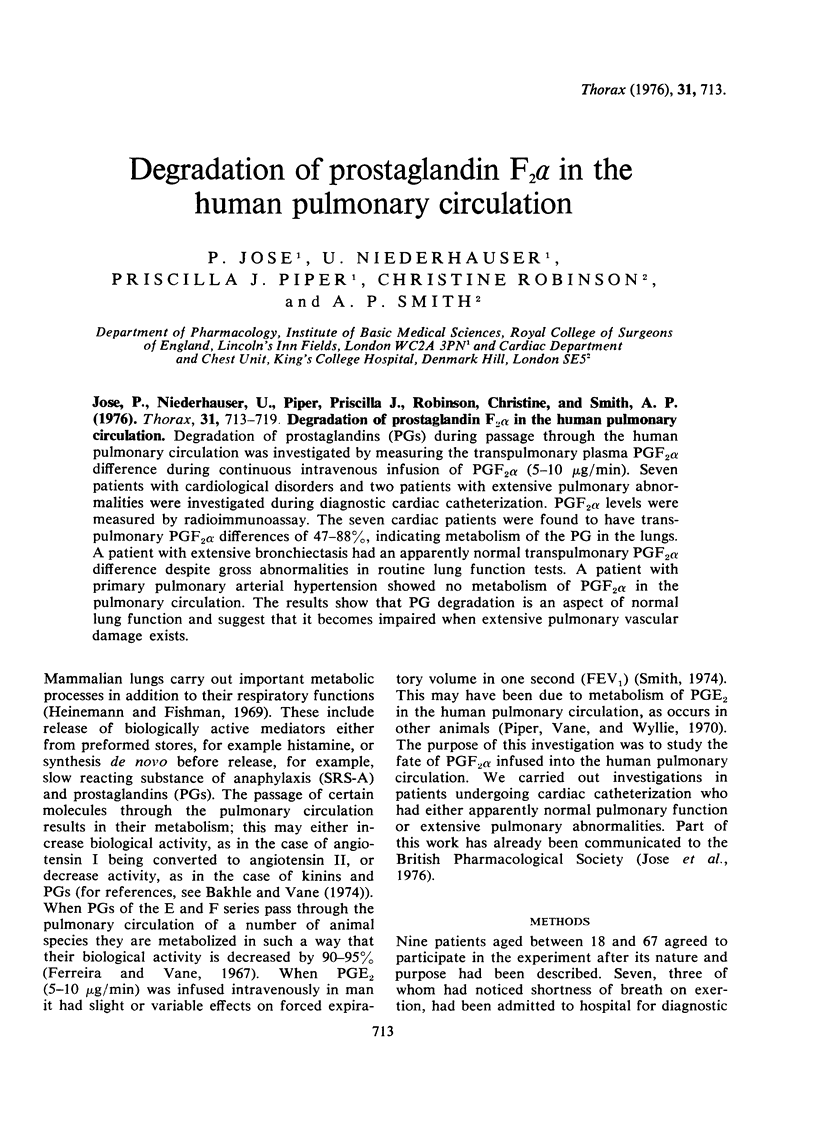
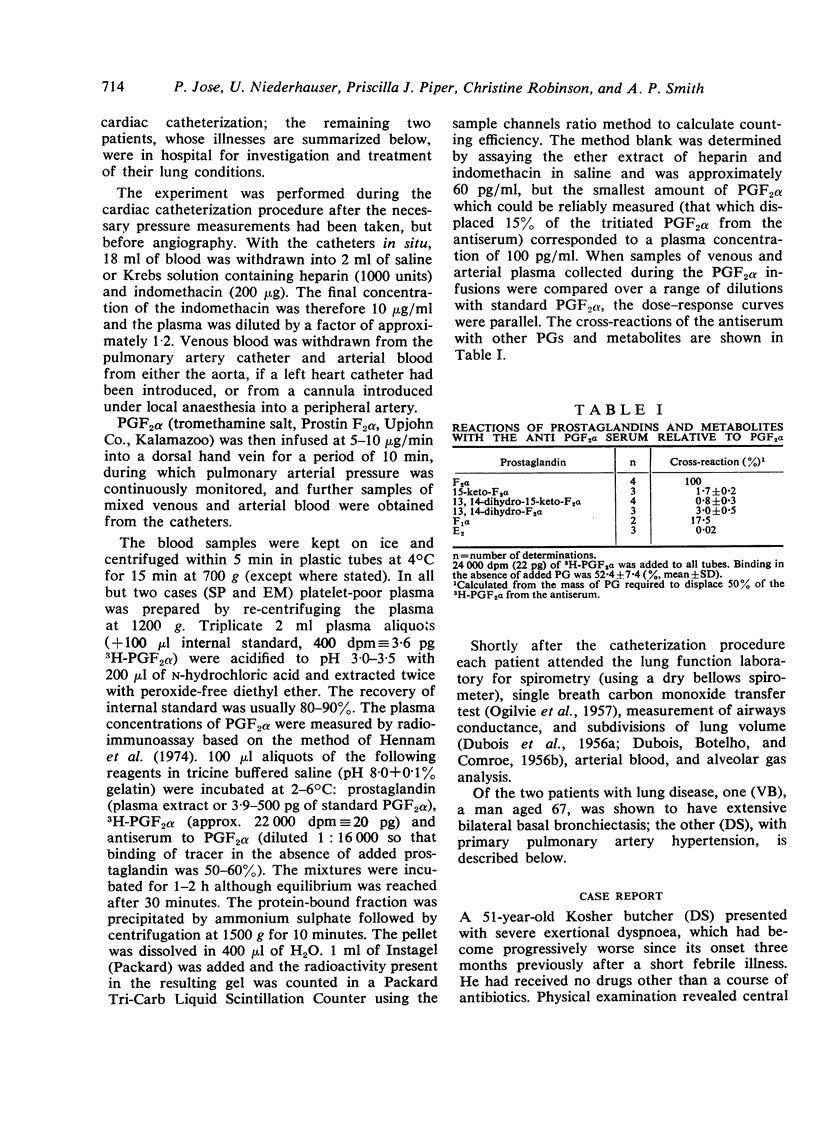
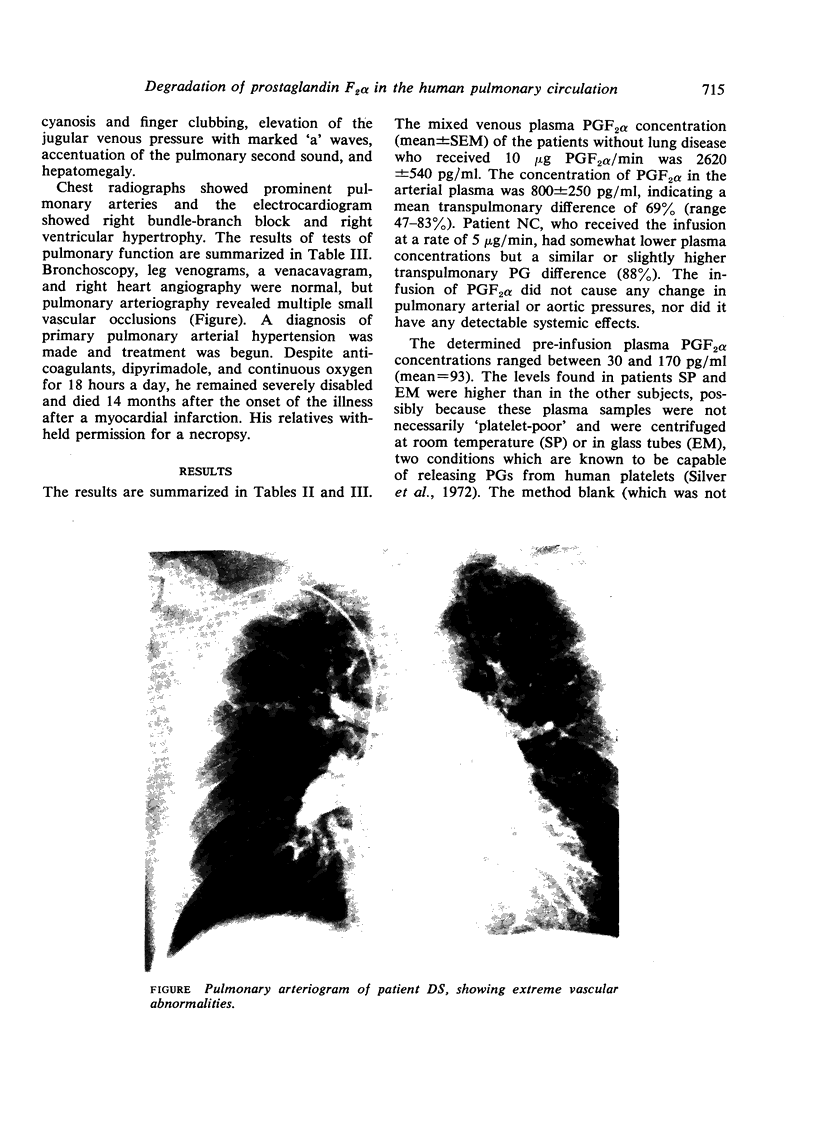
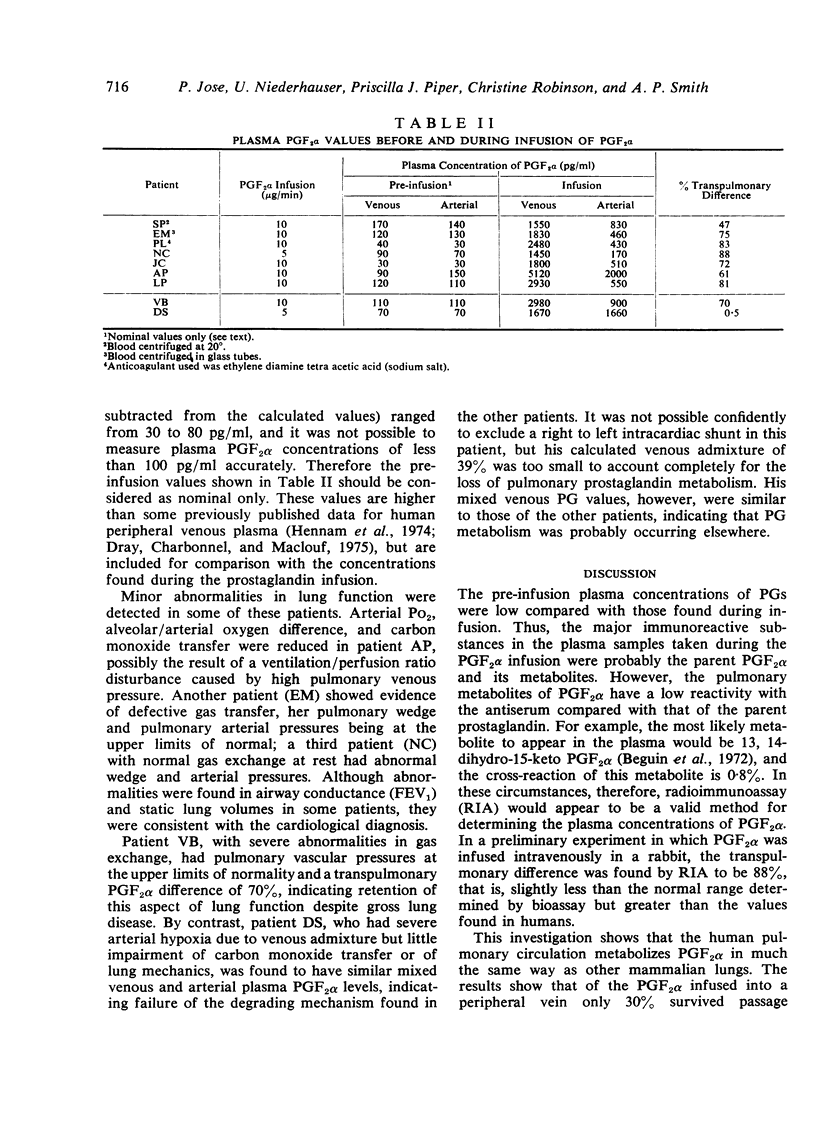
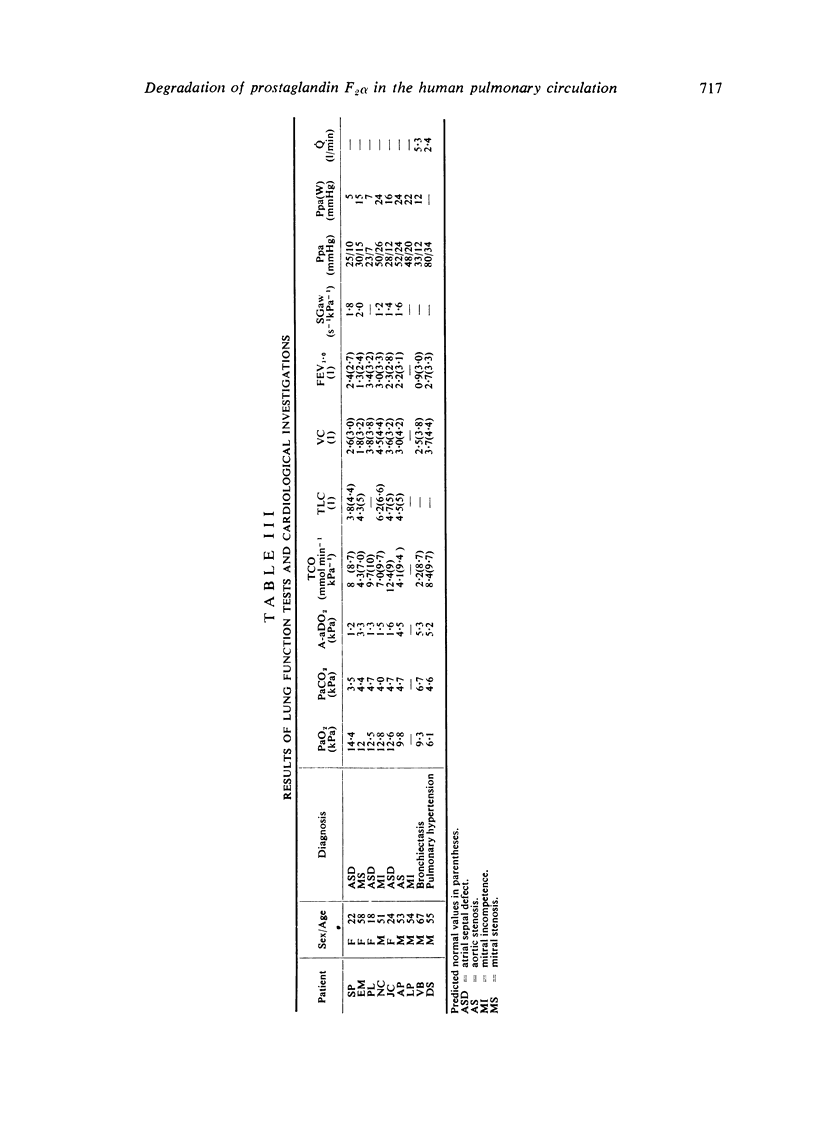
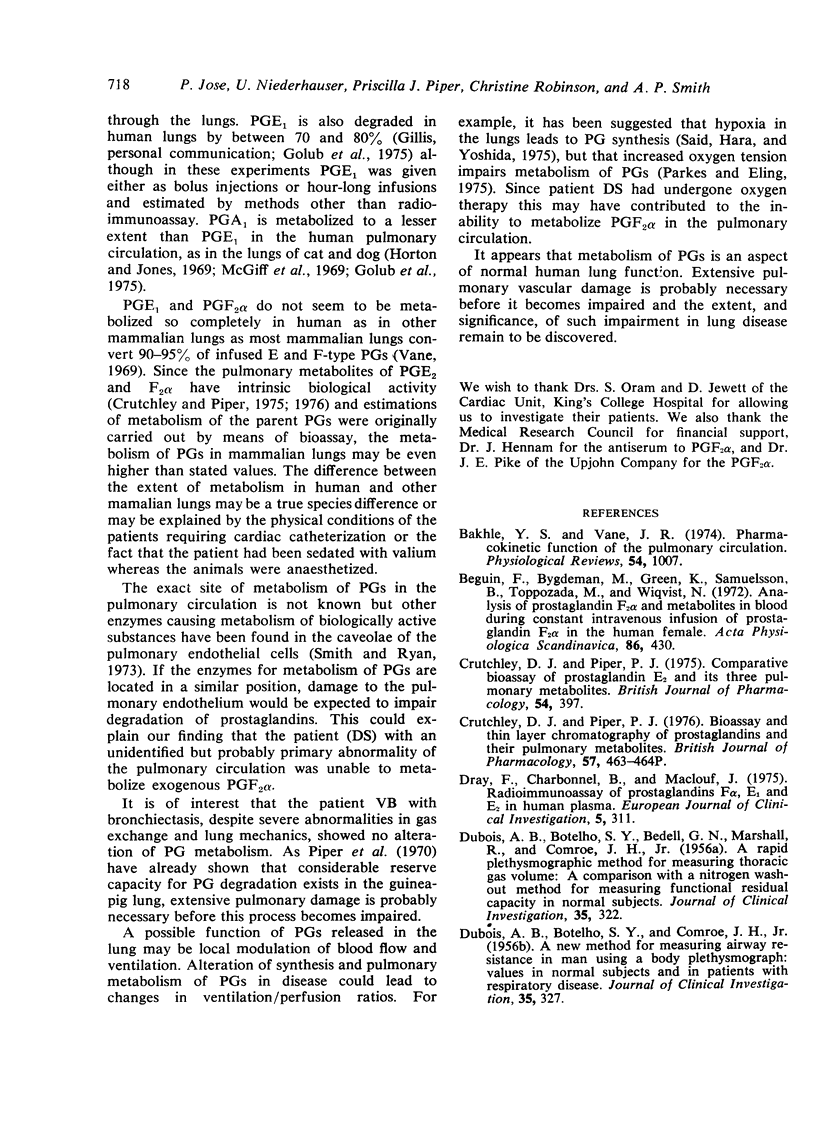
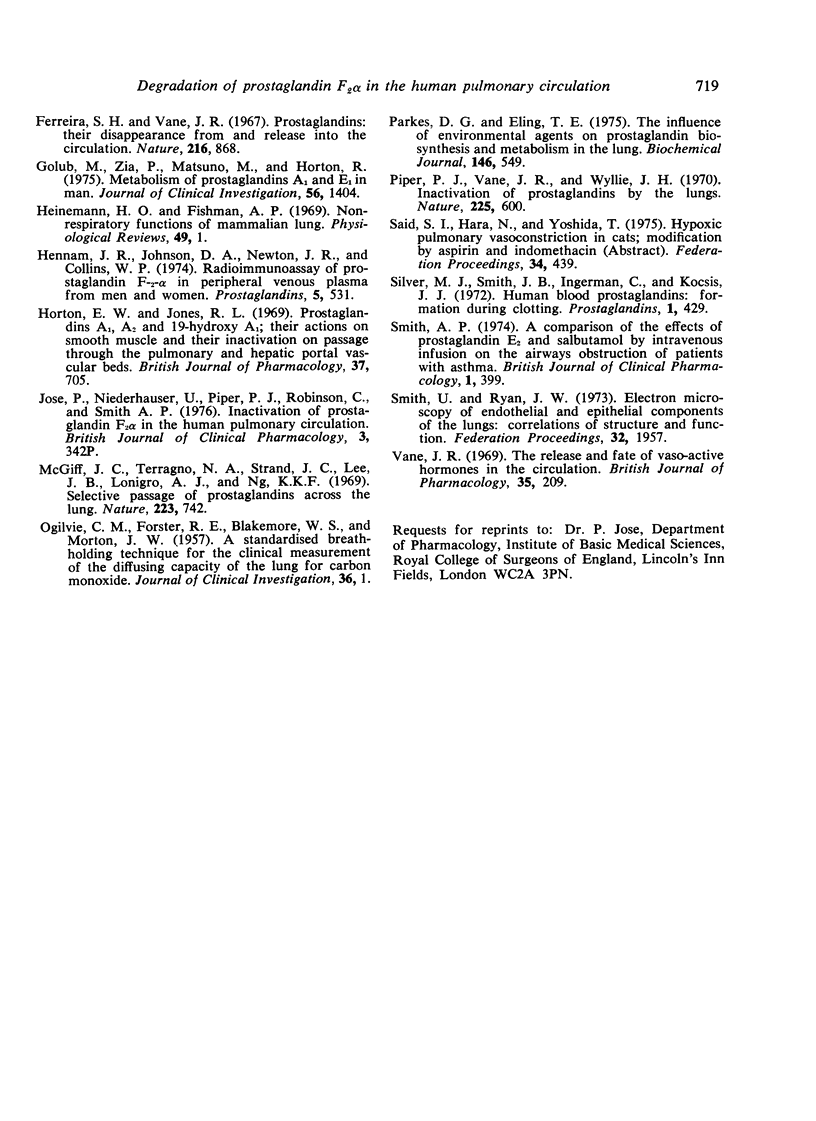
Images in this article
Selected References
These references are in PubMed. This may not be the complete list of references from this article.
- BLAKEMORE W. S., FORSTER R. E., MORTON J. W., OGILVIE C. M. A standardized breath holding technique for the clinical measurement of the diffusing capacity of the lung for carbon monoxide. J Clin Invest. 1957 Jan;36(1 Pt 1):1–17. doi: 10.1172/JCI103402. [DOI] [PMC free article] [PubMed] [Google Scholar]
- Bakhle Y. S., Vane J. R. Pharmacokinetic function of the pulmonary circulation. Physiol Rev. 1974 Oct;54(4):1007–1045. doi: 10.1152/physrev.1974.54.4.1007. [DOI] [PubMed] [Google Scholar]
- Beguin F., Bygdeman M., Gréen K., Samuelsson B., Toppozada M., Wiqvist N. Analysis of prostaglandin F 2 and metabolites in blood during constant intravenous infusion of prostaglandin F 2 in the human female. Acta Physiol Scand. 1972 Nov;86(3):430–432. doi: 10.1111/j.1748-1716.1972.tb05349.x. [DOI] [PubMed] [Google Scholar]
- Crutchley D. J., Piper P. J. Comparative bioassay of prostaglandin E2 and its three pulmonary metabolites. Br J Pharmacol. 1975 Jul;54(3):397–399. doi: 10.1111/j.1476-5381.1975.tb07581.x. [DOI] [PMC free article] [PubMed] [Google Scholar]
- Crutchley K. J., Piper P. J. Bioassay and thin-layer chromatography of prostaglandins and their pulmonary metabolites [proceedings]. Br J Pharmacol. 1976 Jul;57(3):463P–464P. [PMC free article] [PubMed] [Google Scholar]
- DUBOIS A. B., BOTELHO S. Y., BEDELL G. N., MARSHALL R., COMROE J. H., Jr A rapid plethysmographic method for measuring thoracic gas volume: a comparison with a nitrogen washout method for measuring functional residual capacity in normal subjects. J Clin Invest. 1956 Mar;35(3):322–326. doi: 10.1172/JCI103281. [DOI] [PMC free article] [PubMed] [Google Scholar]
- DUBOIS A. B., BOTELHO S. Y., COMROE J. H., Jr A new method for measuring airway resistance in man using a body plethysmograph: values in normal subjects and in patients with respiratory disease. J Clin Invest. 1956 Mar;35(3):327–335. doi: 10.1172/JCI103282. [DOI] [PMC free article] [PubMed] [Google Scholar]
- Dray F., Charbonnel B., Maclouf J. Radioimmunoassay of prostaglandins Falpha, E1 and E2 in human plasma. Eur J Clin Invest. 1975 Jul 29;5(4):311–318. doi: 10.1111/j.1365-2362.1975.tb00459.x. [DOI] [PubMed] [Google Scholar]
- Ferreira S. H., Vane J. R. Prostaglandins: their disappearance from and release into the circulation. Nature. 1967 Dec 2;216(5118):868–873. doi: 10.1038/216868a0. [DOI] [PubMed] [Google Scholar]
- Golub M., Zia P., Matsuno M., Horton R. Metabolism of prostaglandins A1 and E1 in man. J Clin Invest. 1975 Dec;56(6):1404–1410. doi: 10.1172/JCI108221. [DOI] [PMC free article] [PubMed] [Google Scholar]
- Hennam J. F., Johnson D. A., Newton J. R., Collins W. P. Radioimmunoassay of prostaglandin F-2-alpha in peripheral venous plasma from men and women. Prostaglandins. 1974 Mar 25;5(6):531–542. doi: 10.1016/s0090-6980(74)80028-6. [DOI] [PubMed] [Google Scholar]
- Horton E. W., Jones R. L. Prostaglandins A1,A2 and 19-hydroxy A1; their actions on smooth muscle and their inactivation on passage through the pulmonary and hepatic portal vascular beds. Br J Pharmacol. 1969 Nov;37(3):705–722. doi: 10.1111/j.1476-5381.1969.tb08509.x. [DOI] [PMC free article] [PubMed] [Google Scholar]
- McGiff J. C., Terragno N. A., Strand J. C., Lee J. B., Lonigro A. J., Ng K. K. Selective passage of prostaglandins across the lung. Nature. 1969 Aug 16;223(5207):742–745. doi: 10.1038/223742b0. [DOI] [PubMed] [Google Scholar]
- Parkes D. G., Eling T. E. The influence of environmental agents on prostaglandin biosynthesis and metabolism in the lung. Inhibition of lung 15-hydroxyprostaglandin dehydrogenase by exposure of guinea pigs to 100 per cent oxygen at atmospheric pressure. Biochem J. 1975 Mar;146(3):549–556. doi: 10.1042/bj1460549. [DOI] [PMC free article] [PubMed] [Google Scholar]
- Piper P. J., Vane J. R., Wyllie J. H. Inactivation of prostaglandins by the lungs. Nature. 1970 Feb 14;225(5233):600–604. doi: 10.1038/225600a0. [DOI] [PubMed] [Google Scholar]
- Silver M. J., Smith J. B., Ingerman C., Kocsis J. J. Human blood prostaglandins: formation during clotting. Prostaglandins. 1972 Jun;1(6):429–436. doi: 10.1016/0090-6980(72)90011-1. [DOI] [PubMed] [Google Scholar]
- Smith U., Ryan J. W. Electron microscopy of endothelial and epithelial components of the lungs: correlations of structure and function. Fed Proc. 1973 Sep;32(9):1957–1966. [PubMed] [Google Scholar]
- Vane J. R. The release and fate of vaso-active hormones in the circulation. Br J Pharmacol. 1969 Feb;35(2):209–242. doi: 10.1111/j.1476-5381.1969.tb07982.x. [DOI] [PMC free article] [PubMed] [Google Scholar]



